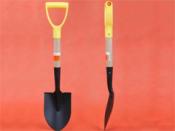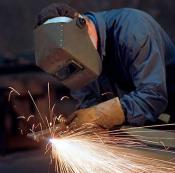Search
Login
Thermal tree, what is it where the thermal tree is used. A new type of building material is thermal wood, we choose correctly
It is no secret that many experts consider wood an obsolete material, which is largely inferior to synthetic products. Non-natural materials surpass wood in many respects, and are often chosen by consumers as the most durable materials for decoration. But, given the pleasant aroma and environmental safety, it should be noted that not a single synthetic material was able to completely displace the tree from the market of finishing materials. On the contrary, experts made a lot of efforts to strengthen the position of wood in the construction market.
Content
- What is a thermal tree? Thermowood production video
- Innovative developments and biochemical manipulations
- The operational parameters of the thermal tree. Advantages and disadvantages
- The use of thermally modified wood video
What is a thermal tree? Thermowood production
To improve the performance of wooden materials, manufacturers had to resort to the effects of physical thermal factors, which, in accordance with new innovative developments, were supposed to significantly increase the resistance of wood to damaging agents. This assumption was confirmed, and thermally modified wood soon became a model of innovative technological processes, having won one of the top positions in the consumer market.
So, more about the thermal tree. What it is? The raw materials for thermal wood are ordinary wood species that have undergone a thermal treatment process, the essence of which is the production effect of high temperatures on known wood species.

Speaking of thermal wood, the production of which is by no means a know-how, it should be noted that the technology of its manufacture consists in stepwise heating of wood to 210 degrees under constant pressure. This process is called hydrothermal treatment and includes three permanent components: high temperatures, wood and water.

Innovative developments and biochemical manipulations
Previously, wood was ennobled with chemicals that protected the material from the damaging effects of mold and rot. But this option implies the possibility of certain harm to the body caused by chemical reagents. Innovative technologies have long gone ahead, and developers have proposed a new way to modify the material so common in construction.

The structural composition of wood includes cellulose and hemicellulose, biochemical manipulations of which are the basis for the production of thermally modified wood. In the process of manufacturing a thermal tree, the technology of which involves biochemical changes in the structure of wood, the decomposition of hemicellulose occurs, while the molecular structure of cellulose remains constant. This is the main way to improve the performance of previously unstable wood. Less importance in this process is given to the evaporation of the extractives of the wood, as well as to the reactive components that are chemically exposed.

The operational parameters of the thermal tree. Advantages and disadvantages
Despite the fact that thermal wood is an absolutely environmentally friendly material and is made without the use of chemical reagents, in many respects it is significantly superior to most finishing materials. The basic ideas about the advantages of thermally modified wood can be obtained by reading its following characteristics:
1. Resistance to decay and the damaging effect of mold;
2. Preservation of geometric configurations in conditions of temperature and humidity;

3. Reduced hygroscopicity and thermal insulation properties, due to the reduced ability of the treated wood to absorb moisture, which significantly reduces the risk of corrosion processes and decay;
4. Stability of humidity parameters, remaining at the level of 5%;
5. Innovative technologies, implying the possibility of obtaining a diverse shade palette, including both light and dark shades, which are preserved throughout the depth of the material;

6. The possibility of processing low-quality raw materials, which after modification takes on the appearance and operational characteristics of expensive wood species;
7. Correlation of strength and density. The manufacturing process of a thermally modified version of wood implies a slight decrease in strength, however, the ratio of density and strength characteristics does not change.

Choosing thermally modified wood, you need to carefully familiarize yourself with its advantages and disadvantages, which thoroughly characterize the material from an operational and aesthetic point of view. And if the advantages are described in detail above, then a few words should still be said about the disadvantages.
Firstly, processed wood is characterized by lower strength, which makes it more fragile, in contrast to raw wood. And, secondly, the thermal tree is characterized by a low level of humidity, which leads to poor bonding, in order to avoid which it is recommended to use polyurethane adhesive.

The use of thermally modified wood
The unique mechanical and physical properties contribute to the use of thermally modified wood in those sectors of construction where the use of unbleached wood is excluded. Thus, the use of thermal wood is successfully practiced in the decoration of saunas and baths, yacht interiors, as well as as a terrace board.
The use of modified wood is also not forbidden in traditional construction events: as materials imitating a log and timber, for the design of plots and structures, for the manufacture of furniture, stairs and railings. Successfully used thermal tree for the floor.

The performance characteristics of thermally modified wood floors are in many ways superior to those for a floor made of ordinary wood material. Thermally modified wood, in contrast to ordinary wood, is characterized by significantly lower thermal conductivity, which ensures a higher floor temperature.
The use of thermal wood, the price of which is significantly lower than that for elite wood species, such as bog oak or Canadian cedar, will make it possible to produce parquet that will not yield inferior wood parquet in terms of performance.

In general, characterizing the areas of use of thermal wood, it is also necessary to mention:
1. External and internal finishing measures in rooms with a high level of humidity;

2. The production of cladding boards, balcony blocks, kitchen furniture, the manufacture of arbors and fences, significantly transforming the landscape design and the design of the room;
3. Facing work using thermal wood for building facades and walls;

4. Restoration work and the production of garden flooring,

5. Interior design and decoration: the manufacture of platbands, skirting boards, handrails and window sills, which is due to the high aesthetic characteristics of the modified wood, which in the process of processing acquires the appearance of a tree that has undergone a long temporary impact, which can be traced to a clear manifestation of its texture.







